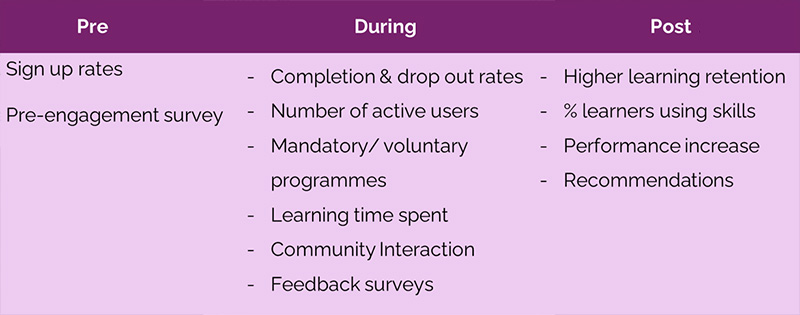Creating a learning strategy that is appealing to learners whilst meeting business objectives requires a fine balance. CrossKnowledge’s Learning Director, Jan Rijken and CrossKnowledge partner Schouten Global’s CEO Camiel Gielkens discuss the impact of learner engagement on performance and business goals.
The evolution in corporate learning
Before COVID, there were several factors influencing learning. Jan: “For instance economic turbulence was already impacting business models, which in turn impacts the jobs and skill sets of your employees. Another factor to take into account is what we call the hybrid workforce: since people’s careers take longer, we have to keep them engaged and learning. In addition, it is wise to take into account the motivation of current top talents or graduates entering your organization. They are not looking for lifetime employment, they are looking for career development opportunities.”
He continues: “Now with COVID, new dynamics have arrived. Health and safety are high on the agenda and of course remote working and learning. Many organizations focus on upskilling and reskilling, and on ‘outskilling’: responsible employers help employees that leave the organization to develop themselves before entering the labor market. The last factor I want to mention here is purpose and work-life balance; these have become more and more important than ever before. All these elements have a big impact on learning.”
What are the implications of these driving forces? Jan explains: “McKinsey research (2020) shows that capability building is more valuable today than ever before. Organizations indicate that capability building is 20% more important now, compared to the time pre-COVID.” Reskilling and upskilling of current employees is a useful way to address the skills gap. According to Jan some of the most important new workforce skills are: leading remote teams, resilience and creativity.
Jan: “It is a very exciting time to be in L&D. The pressure is higher, but there are many opportunities: making learning solutions available for more people, moving to digital learning and using data to know your audience and improving learning.”
Learner engagement
Since many people are working from home, learner engagement is key. And how do we define learner engagement? Jan explains: “It’s a measure that reflects the quantity and quality of a learner’s participation in their courses and every other aspect of their development. Also, it echoes a learner’s interaction and cooperation with co-learners and instructors. In other words, learner engagement is the measure of a potentially successful learning experience for everyone concerned.”
How to boost learner engagement
Using a customer case study as an example, Camiel shares his experiences of increasing learner engagement to meet business goals. In an eleven-week hybrid (in this case virtual) program for a partner in the automotive industry, Camiel noticed early on that he needed to make changes: “The goals of the learning program were not clear, and the first results were not great. So, we asked ourselves two questions. The first was: ‘How do we recognize an engaged learner?’.”
In this business case the results improved using these four dimensions of learner engagement:
- Cognitive engagement: asking learners to summarize their learning and link it to their own work context.
- Behaviourally engaged learners: stimulating deeper connections by giving compliments to participants who finish homework in time and being in contact with participants who do not complete their tasks.
- Emotional engagement: creating a safe environment to learn. Explaining the goals of the program and high-level design and connecting to individual learning goals whilst involving the manager.
- Social Engagement: asking learners to bring their own work and experiences into their learning. Use role plays and buddy coaching.
The second question Camiel asked himself was, ‘What do we actually want to achieve with this program?’ In this case, it was building a learning culture, promoting communication and collaboration, boosting creativity, fostering personal development, and providing a transformative experience. Camiel: “By stating this clearly and communicating to learners, this increased everybody’s focus.”
Securing performance
The participants of the webinar indicated measuring performance is an important factor in getting the learning recognized in organizations. Jan agrees: “When learning is offered at the learner’s point-of-need, it will impact learner performance positively. Improved course and job performance combine for a positive ROI. Highly engaged learners become deeply engaged employees. They also feel appreciated, positively challenged, and better equipped to follow their personal development path.”
How to measure learner performance
What do Jan and Camiel advise as ways to measure learner performance? Here are their suggestions:
